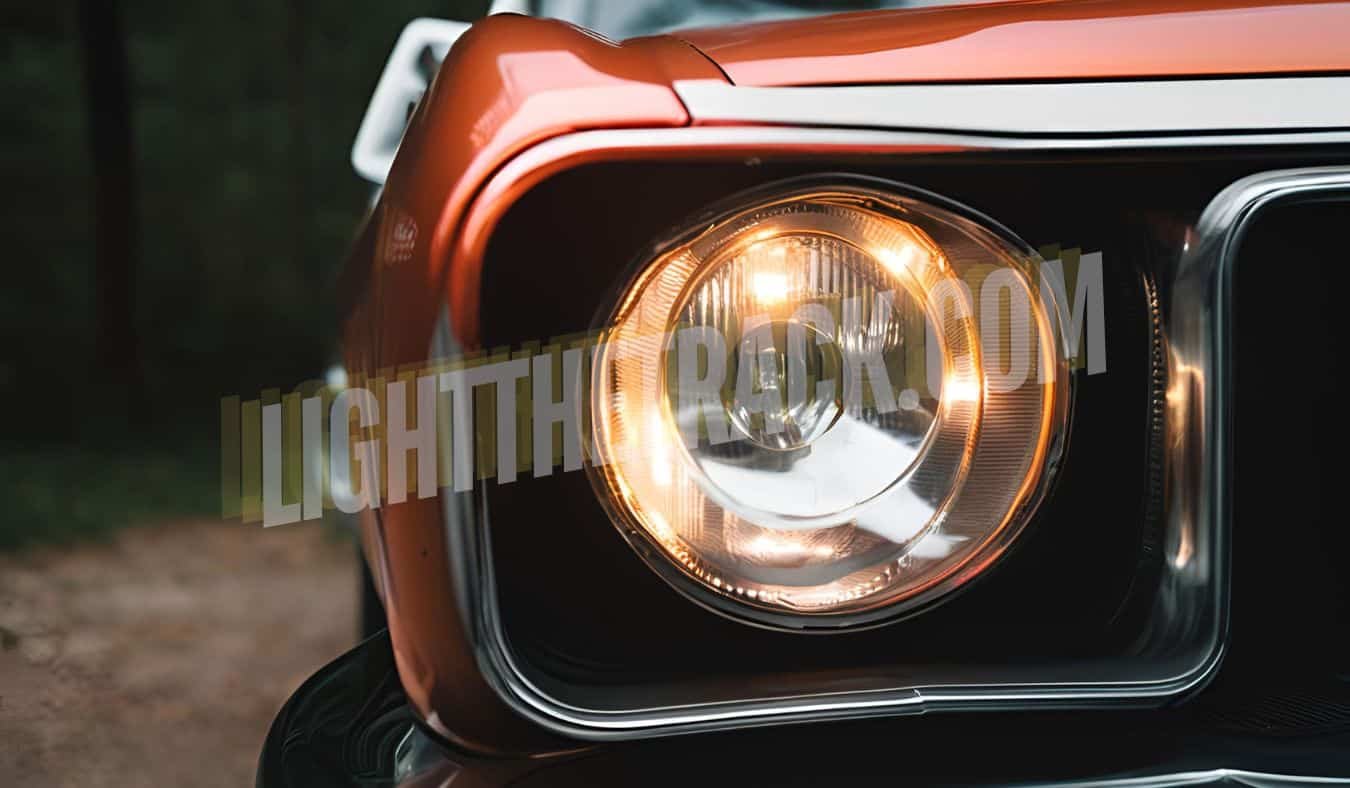Have you ever found yourself squinting through foggy headlights, struggling to see the road ahead? You’re not alone. Cloudy headlights are a common problem that not only mars your car’s appearance but also poses a serious safety risk. But before you rush to the auto shop or shell out for expensive restoration kits, there’s a surprising solution sitting right in your bathroom: toothpaste.
In this comprehensive guide, we’ll explore how this everyday item can breathe new life into your car’s headlights, potentially saving you time and money while significantly improving your nighttime driving safety. We’ll delve into the science behind this DIY hack, provide a detailed step-by-step process, and offer expert tips to ensure you get the best results possible.
Understanding Foggy Headlights
1. Causes of Foggy Headlights
To appreciate why toothpaste can be so effective, it’s crucial to understand what causes headlights to become foggy in the first place. There are several culprits:
- Oxidation: The primary cause of foggy headlights is oxidation due to UV exposure. Most headlights are made of polycarbonate plastic, which is durable but susceptible to degradation from sunlight. Over time, UV rays break down the protective coating on the headlights, leading to a yellowish, hazy appearance.
- Road Debris and Chemicals: As you drive, your headlights are constantly bombarded by small particles of dirt, sand, and road salt. These abrasive materials can slowly erode the surface of your headlights. Additionally, exposure to various chemicals, including those used in car washes or de-icing solutions, can contribute to the breakdown of the headlight’s protective layer.
- General Wear and Tear: Simply put, headlights age. The constant exposure to the elements, temperature fluctuations, and minor impacts all take their toll over time.
You may like: How to remove tint from headlights
2. Impact on Driving Safety
The consequences of foggy headlights extend far beyond aesthetics:
- Reduced Visibility: Cloudy headlights can reduce light output by up to 80%, severely limiting your ability to see the road ahead, especially in poor weather conditions.
- Increased Risk of Accidents: With diminished visibility comes a higher risk of accidents. You may not spot obstacles, pedestrians, or animals in time to react safely.
- Potential Legal Issues: In many jurisdictions, driving with excessively foggy headlights is illegal and can result in fines or failed vehicle inspections.
The Toothpaste Solution: How It Works
1. Science Behind Toothpaste Cleaning
The effectiveness of toothpaste in cleaning headlights lies in its unique composition:
- Mild Abrasives: Toothpaste contains fine abrasive particles, typically silica or calcium carbonate. These act like a very fine sandpaper, gently scrubbing away the oxidized layer on your headlights.
- Detergents: The surfactants in toothpaste help to break down and remove dirt and grime that have accumulated on the headlight surface.
- Polishing Agents: Some toothpastes contain mild polishing compounds that can help restore shine to the headlight surface.
2. Types of Toothpaste to Use
Not all toothpastes are created equal when it comes to headlight restoration:
- Non-gel Toothpastes: Opt for traditional paste formulations rather than gels. The paste forms tend to have more abrasive power.
- Whitening Toothpastes: These often contain additional mild abrasives and sometimes hydrogen peroxide, which can be particularly effective in removing yellowing.
- Baking Soda Toothpastes: Toothpastes containing baking soda provide extra cleaning power due to the abrasive nature of sodium bicarbonate.
Step-by-Step Guide to Cleaning Headlights with Toothpaste
1. Preparation
Before you begin, gather the following materials:
- Non-gel toothpaste
- Microfiber cloths or soft rags
- Water for rinsing
- Automotive masking tape or painter’s tape
- UV-resistant sealant (optional but recommended)
- Car wax (optional)
Next, follow these preparatory steps:
- Wash your headlights thoroughly with car soap or glass cleaner to remove surface dirt.
- Dry the headlights completely with a microfiber cloth.
- Use automotive masking tape or painter’s tape to protect the paint around your headlights.
2. Application Process
- Applying Toothpaste:
- Squeeze a dime-sized amount of toothpaste onto each headlight.
- Using your fingers or a cloth, spread the toothpaste evenly across the entire surface of the headlight.
- Scrubbing Techniques:
- With a microfiber cloth or soft sponge, begin scrubbing the headlight in small, circular motions.
- Apply firm, even pressure as you work.
- Continue scrubbing for 3-5 minutes per headlight.
- For stubborn areas, you may use a soft-bristled toothbrush to increase abrasion.
- Rinsing and Drying:
- Thoroughly rinse the headlight with clean water to remove all toothpaste residue.
- Use a clean microfiber cloth to dry the headlight completely.
- Inspect your work. If needed, repeat the process for improved results.
Find out more: led headlight laws of California
3. Post-Cleaning Care
To maintain your newly restored headlights:
- Apply UV Sealant:
- Use a UV-resistant headlight sealant to protect against future oxidation.
- Follow the product instructions carefully for application and curing time.
- Wax for Extra Protection:
- Apply a thin layer of car wax to the headlights.
- This adds an extra barrier against environmental factors and makes future cleaning easier.
Tips for Best Results
- Use Circular Motions: This ensures even coverage and prevents streaking.
- Be Patient: For severely oxidized headlights, you may need to repeat the process 2-3 times.
- Rinse Thoroughly: Any leftover toothpaste can dry and create a hazy film.
- Consider a Headlight Restoration Kit: For extremely damaged headlights, a professional kit might be necessary.
Alternative Headlight Cleaning Methods
While toothpaste is an effective DIY solution, there are other options available:
1. Commercial Headlight Restoration Kits
These kits typically include:
- Cleaning solution
- Sandpaper of various grits
- Polishing compound
- UV sealant
Pros:
- Often more effective for severely damaged headlights
- Includes all necessary materials
Cons:
- More expensive than toothpaste
- Can be time-consuming to use
2. Professional Headlight Restoration Services
For those who prefer a hands-off approach:
Pros:
- Guaranteed results
- No effort required on your part
Cons:
- Most expensive option
- Requires leaving your car at a service center
Also Read: How to restore headlights with sandpaper
3. Other DIY Methods
- Baking Soda Paste: Mix baking soda with water to create a paste. Apply and scrub similarly to the toothpaste method.
- Vinegar Solution: Create a mixture of equal parts water and white vinegar. Use this to clean the headlights before applying a baking soda paste.
- Sandpaper Method: For severely oxidized headlights, wet-sanding with progressively finer grits of sandpaper can be effective, but requires more skill and care.
Maintaining Clear Headlights
To keep your headlights clear after restoration:
- Regular Cleaning: Wash your headlights whenever you wash your car.
- Apply UV Protection: Use a UV-resistant sealant every 3-6 months.
- Park in Shade: When possible, park your car in a garage or shaded area to reduce UV exposure.
- Consider Headlight Covers: These can provide additional protection against debris and UV rays.
Remember, if your headlights are cracked or have internal fogging, it’s time to consider replacement rather than restoration.
Explore further: Headlight lumens legal limit texas
Writer’s Opinion: Is the Toothpaste Method Worth It?
After trying this method myself and researching extensively, I can confidently say that the toothpaste hack is indeed worth a try. Here’s my take:
Pros:
- Incredibly cost-effective
- Uses readily available materials
- Can produce impressive results, especially on mildly foggy headlights
- Safe when done correctly
Cons:
- Can be labor-intensive
- May not be as effective on severely oxidized headlights
- Results may not last as long as professional treatments
In my experience, the toothpaste method worked wonders on my 5-year-old sedan’s headlights. The improvement in light output was noticeable, and the process was oddly satisfying. However, for my older truck with severely yellowed headlights, I found that a commercial restoration kit yielded better results.
My recommendation? If your headlights are mildly to moderately foggy, absolutely give the toothpaste method a shot. It’s a low-risk, potentially high-reward solution. For severely damaged headlights or if you’re not inclined to DIY, consider a professional service or a high-quality restoration kit.
Know more: cleaning yellowed headlights
Frequently Asked Questions (FAQ)
How often should I clean my headlights with toothpaste?
Generally, once every 3-6 months is sufficient. However, frequency depends on your climate and driving conditions.
Can I use any type of toothpaste?
Non-gel, whitening toothpastes work best. Avoid toothpastes with large abrasive particles or heavy flavoring agents.
Is the toothpaste method safe for all types of headlights?
It’s safe for most plastic headlight covers. However, if your headlights have a special coating, check with your vehicle manufacturer first.
How long does the toothpaste cleaning effect last?
Results typically last 3-6 months, depending on driving conditions and sun exposure.
Can toothpaste damage my car’s paint?
If you’re not careful, yes. Always use masking tape to protect surrounding paint and rinse thoroughly.
What if the toothpaste method doesn’t work for my headlights?
For severely oxidized headlights, you may need to try a commercial restoration kit or seek professional help.
Is it better to use toothpaste or a commercial headlight restoration kit?
For mild to moderate fogging, toothpaste can be just as effective. For severe cases, a kit might yield better results.
Can I use an electric toothbrush to clean my headlights?
While it might seem efficient, an electric toothbrush can be too harsh. Stick to manual scrubbing for better control.
Related article: Diy headlight reflector resilvering
Conclusion
Restoring your headlights with toothpaste is more than just a money-saving hack; it’s a simple yet effective way to improve your vehicle’s appearance and, more importantly, enhance your driving safety. By following the steps outlined in this guide, you can bring new life to foggy headlights and enjoy clearer night vision on the road.
Remember, while the toothpaste method is excellent for regular maintenance and mild to moderate oxidation, severe cases may require more intensive solutions. Always prioritize safety – if you’re unsure about the condition of your headlights or the effectiveness of your cleaning efforts, don’t hesitate to consult a professional.
Ultimately, whether you choose to use toothpaste, a commercial kit, or professional services, the key is to maintain your headlights regularly. Clear headlights not only make your car look better but also play a crucial role in keeping you and others safe on the road. So why wait? Grab that tube of toothpaste and give your headlights the attention they deserve. Your nighttime drives (and your wallet) will thank you!


Leave a Reply